- Author: Kathy Keatley Garvey
Things are buzzing over at the Robert Mondavi Wine and Food Science on the University of California, Davis campus.
The RMI folks are gearing up for the big Honey! event, set for 9 a.m. to 6:30 p.m., Friday, Oct. 21 in the UC Davis Conference Center.
It's not every day that there's an all-day event about honey. Clare Hasler-Lewis, executive director of RMI and executive assistant Kim Bannister promise a "sweet" event--"too sweet not to miss."
Yes, there will be talks about honey and bees, a honey-themed lunch, honey tasting and a honey taste-off. To add to the sweetness: Gimbal's Fine Candies of San Francisco is donating individual-sized packets of Honey Lovers, its popular candy made with honey. This company generously donates 5 percent of the proceeds from the sale of Honey Lovers for UC Davis bee research (Department of Entomology).
And, then there's the sweet harmony of the Honeybee Trio, comprised of three teenagers from Vacaville. They'll sing "Sugartime," and...cross your fingers...they may come up with a version of Jimmie Rodgers' "Honeycomb."
Meanwhile the "bee guys"--Eric Mussen, Brian Johnson and Norm Gary--are polishing their speeches as are the other speakers, Louis Grivetti and Liz Applegate, all UC Davis faculty or former faculty.
Beekeeper Brian Fishback of Wilton will bring in two bee observation hives. Other displays include a beekeeping exhibit from the Harry H. Laidlaw Jr. Honey Bee Research Facility and bee specimens from the Bohart Museum of Entomology.
Check out the Honey! agenda on the RMI website. You can reserve your space there or contact Kim Bannister at kbannister@ucdavis.edu or (530) 752-5171.
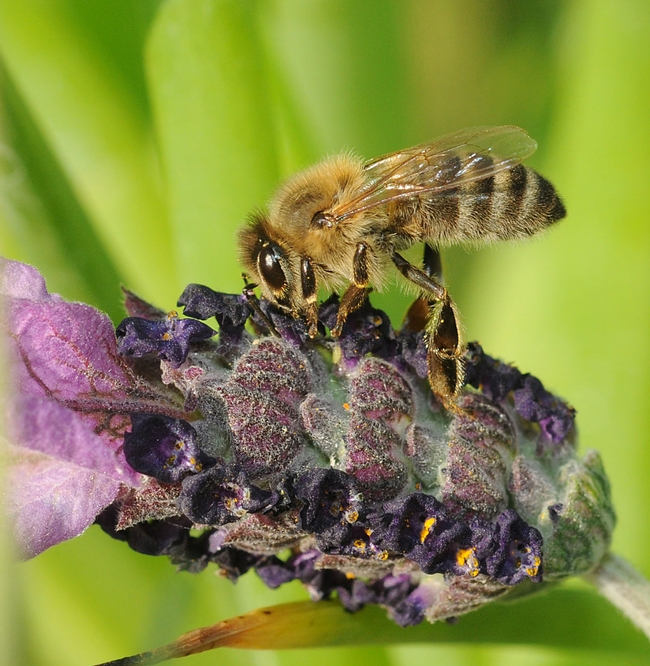
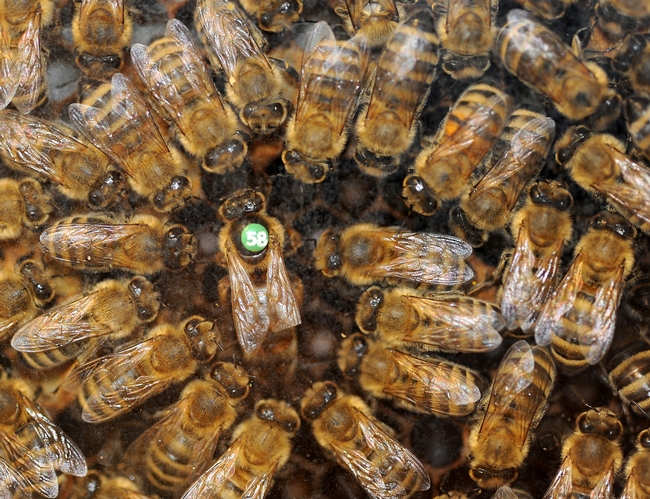
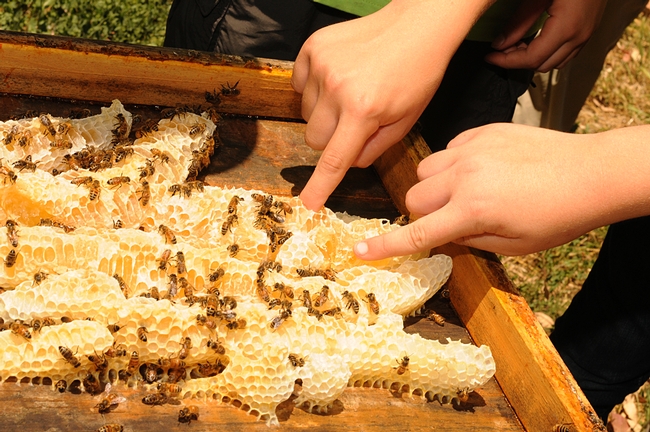
- Author: Kathy Keatley Garvey

This major agricultural pest is one of the causes of those cat-faced strawberries you see in your garden or in the field. Cat-faced? Think misshapened, deformed or irregularly shaped berries.
Catfacing occurs when the young seeds (achenes) fail to stimulate the fruit (receptacle) to grow.
Lygus bugs attack herbs, vegetable crops, commercial flower plants, fruit trees and nursery stock.
Enter Frances Sivakoff, doctoral candidate in entomology at UC Davis. She'll discuss her research on lygus bugs from 12:10 to 1 p.m., Wednesday, Oct. 19 in 122 Briggs Hall, UC Davis.
Her topic: "Pest Management from a Landscape Perspective: Understanding the Factors that Influence the Distribution of Lygus hesperus.”
Sivakoff, who studies with major professor Jay Rosenheim, investigated the dispersal ability of lygus bugs. Her results support the “already established importance of safflower, alfalfa, cotton and uncultivated agricultural land on Lygus population dynamics."“
Her research also "demonstrated the importance of several other crops in California’s San Joaquin Valley that have not traditionally been considered for the management of Lygus."
Entomology professor James R. Carey plans to webcast the seminar and then post it online on UCTV.
So soon, coming to a computer near you, lygus bug research!

- Author: Kathy Keatley Garvey
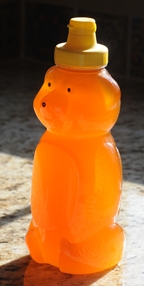
Honey in the evening
Honey at suppertime
Be my little honey
And love me all the time...
So sang the McGuire Sisters in their 1958 hit tune, "Sugartime."
And so will sing the Honeybee Trio of Vacaville at the Honey! event on Friday, Oct. 21 in the UC Davis Conference Center. The site is located across from the Robert and Margrit Mondavi Center for the Performing Arts.
The public celebration of honey and bees, set from 9 a.m. to 6:30 p.m., will include talks by five UC Davis or former UC Davis faculty, a honey-themed lunch, a "best honey" contest and a reception from 5 to 6:30 p.m. where the Honeybee Trio will sing.
The group, together for three years, includes Karli Bosler, 16, Sarah McElwain, 15, and Natalie Angst, 16. They visited the Häagen-Dazs Honey Bee Haven at UC Davis today, checked out the six-foot-long bee sculpture by Davis artist Donna Billick, and met with Extension apiculturist Eric Mussen and native pollinator specialist Robbin Thorp, emeritus professor of entomology.
Does anyone in the Honeybee Trio keep bees? No, but Natalie's aunt is a beekeeper in Fremont.
At the Oct. 21st event, beekeepers are invited to bring their best jar of honey for a judging contest. Attendees will decide the winners, and prizes will be awarded to the first, second and third place winners.
Honey varieties are expected to include clover, fireweed, orange blossom, eucalyptus, tupelo, safflower and buckwheat. Further details will be announced on the RMI website athttp://robertmondaviinstitute.ucdavis.edu/honey.
“There will be special prizes for the best honey,” said event coordinator Clare Hasler-Lewis, executive director of the Robert Mondavi Institute for Wine and Food Science (RMI), which is sponsoring the event.
Extension apiculturist Eric Mussen of the UC Department of Entomology, a co-sponsor, will coordinate the honey tasteoff. He also spearheads the honey tasting at Briggs Hall during the annual UC Davis Picnic Day celebration.
Morning speakers are Mussen, who will discuss “The Wonder of Honey Bees”; assistant professor/bee biologist Brian Johnson, who will speak on “How Bees Cooperate to Make Honey and What they Do With It When We Don't”; and emeritus professor/bee scientist Norman Gary, an author and professional bee wrangler, whose topic is “Hobby Beekeeping in Urban Environments.”
Afternoon speakers are Louis Grivetti, professor emeritus, Department of Nutrition, discussing “Historical Uses of Honey as Food” and Liz Applegate, professor, Department of Nutrition and director of Sports Nutrition Program, “Sweet Success—Honey for Better Health and Performance.”
Honey tasting, coordinated by Mussen, is scheduled from 3 to 3:45 p.m.
At the reception--guests will sip wine and sample honey--the Honeybee Trio and the Jazz Nuances will perform. The Honeybee Trio's specializes in classics from the 1930s and beyond in three part-harmony. The Jazz Nuances: jazz standards with "a sound and feel reminiscent of the 1950s and '60s West Coast Cool Sound."
Norm Gary will sign and sell his newly published book, “Honey Bee Hobbyist: The Care and Keeping of Bees.” On display will be beekeeping equipment from the Harry H. Laidlaw Jr. Honey Bee Research Facility, bee observation hives, and bee and book products by Rev Honey (Ron Fessenden, M.D.)
There's still time to make reservations. Recently reduced prices are: industry members and the public: $50; UC faculty, staff and Friends of the RMI: $35, and UC students, $15. For those attending the reception only, the cost is $10 general admission and $5 for students. Reservations may be made online at http://robertmondaviinstitute.ucdavis.edu/honey or with Kim Bannister at bannister@ucdavis.edu or (530) 752-5171.
This is a first-of-a-kind event at UC Davis...and the place to "bee" on Oct. 21 if you want to know more about bees and honey.
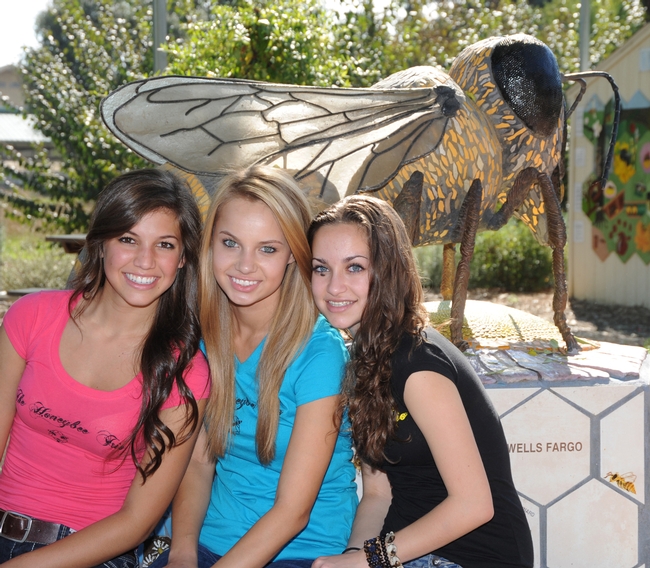
- Author: Kathy Keatley Garvey
It's good to see so many people looking for the critically imperiled Franklin's bumble bee, which the U.S. Fish and Wildlife Service may soon list as “endangered” and provide protective status.
Native pollinator specialist Robbin Thorp, emeritus professor entomology at UC Davis, has been tracking the elusive bumble bee since 1998. Its only known location is in a narrow range in northern California (Siskiyou and Trinity counties) and southern Oregon (Jackson, Douglas and Josephine counties).
He's seen it only once since 2006.
But now Robbin Thorp has a "posse" on the lookout for the elusive bumble bee.
After The News-Review, Douglas County, Ore., published a news story and photo of the bumble bee on Sept. 13, nearly two dozen people "called or wrote...to say they thought they had spotted Franklin's bee," wrote reporter John Sowell in the Oct. 12 edition.
Alas, it was not to "bee." Thorp identified the residents' photos as mostly the yellow-faced bumble bee, Bombus vosnesenskii.
"There are a lot of lookalikes out there," Thorp told Sowell.
Franklin's bumble bee, Bombus franklini (Frison), is mostly black with distinctive yellow markings on the front of its thorax and top of its head. It has a solid black abdomen with just a touch of white at the tip, and an inverted U-shaped design between its wing bases,In contrast, the yellow-faced bumble bee has a yellow face. its thorax and abdomen are mostly black but it has yellow band near the tip of the abdomen.
So, bottom line, if you see a bumble bee with yellow on its face and a yellow band at the tip of the abdomen, it's not our buddy, Franklin's bumble bee.
To check a puzzling identity, email your photo to Robbin Thorp at rwthorp@ucdavis.edu
As Thorp told reporter Sowell: "The more eyes that are looking for it, the better it's going to be."
Or "bee."
Related links:
Franklin's Bumble Bee Still Elusive (Link to PDF of Douglas County Insect Sightings Create Buzz)
Franklin's Bumble Bee May Soon Be Listed as Endangered
Declining Bumble Bee Population Alarming
Robbin Thorp's Bumble Bee Research Yields Dickson Award
Mission to Save Franklin's Bumble Bee
California’s List of Endangered Species
Bumble Bees in Decline (Xerces Society)
Bumble Bees in California (UC Berkeley)
Watch Robbin Thorp's Webinar on bumble bees
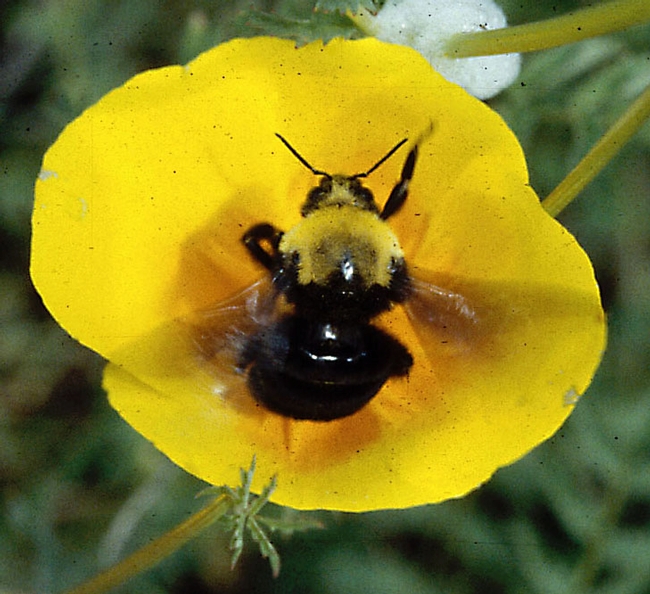
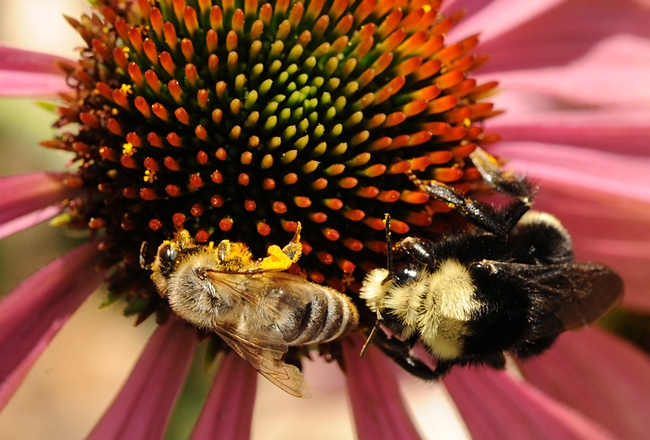
- Author: Kathy Keatley Garvey

The Entomological Society of America (ESA) just announced that among the 2011 award recipients are two UC Davis faculty: Michael Parrella and Walter Leal.
Michael Parrella, professor and chair of the Department of Entomology is the recipient of the ESA's Distinguished Achievement Award in Horticultural Entomology.
Chemical ecologist Walter Leal, professor and former chair of the Department of Entomology, is the recipient of the ESA's Nan-Yao Su Award for Innovation and Creativity in Entomology.
They'll receive the awards at the 59th Annual ESA Meeting, set Nov. 13-16 in Reno. Each award comes with a cash prize and a plaque.
Both Parrella and Leal have done so much for the wide world of entomology that their accomplishments could easily fill several books.
The fact that they were singled out from a 6000-member international organization for these coveted awards says a lot about them, their work, their commitments, their passions, and the UC Davis Department of Entomology.
The Nan-Yao Su Award goes to an ESA member who has demonstrated, through projects or accomplishments, "an ability to identify problems and develop creative, alternative solutions that significantly impact entomology."
The Distinguished Achievement Award in Horticultural Entomology, sponsored by Gowan Company, singles out an entomologist who has contributed greatly to the American horticulture industry.
Parrella, who also has a joint appointment in the Department of Plant Sciences and is a former associate dean with the College of Agricultural and Environmental Sciences, has developed an internationally recognized program focused on advancing integrated pest management and biological control for the floriculture and nursery industry.
Parrella is a past president of the Pacific Branch of the ESA and represents the Branch on the ESA Governing Board. He has held numerous offices and has authored more than than 375 publications.
Leal is a pioneer in the field of insect communication and on the cutting edge of research. He examines how insects detect smells, communicate with their species, detect host and non-host plants, and detect prey.
Leal has designed and synthesized complex pheromones from many insects, including scarab beetles, true bugs, longhorn beetles and the citrus leafminer. He and his lab discovered the secret mode of the insect repellent DEET.
A past president of International Society of Chemical Ecology, Leal has published his work in more than 161 peer-reviewed journals in the general field of insect pheromones, insect chemical communication, and insect olfaction, many widely cited by his peers.
Hail to the chairs--the current chair and a past chair.



